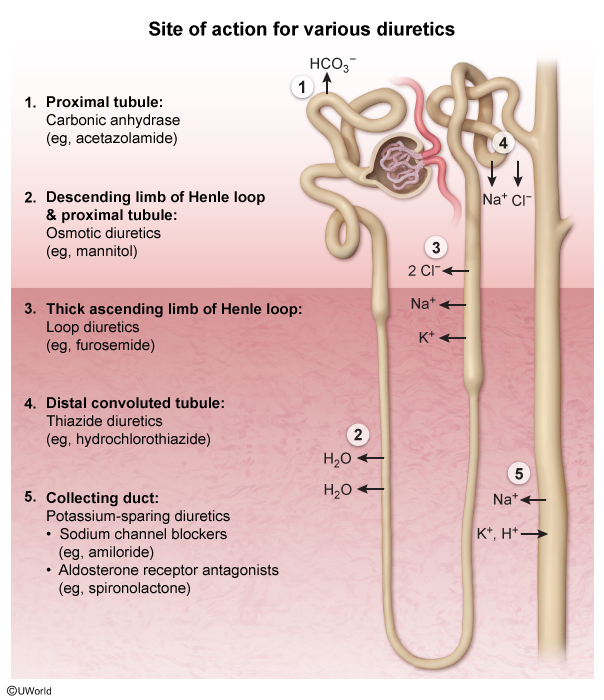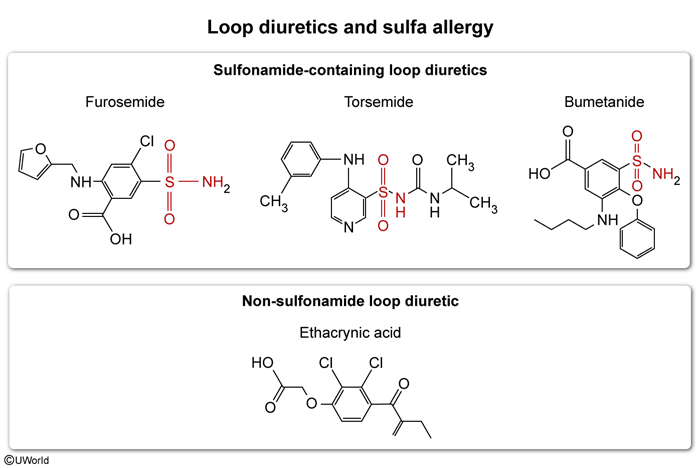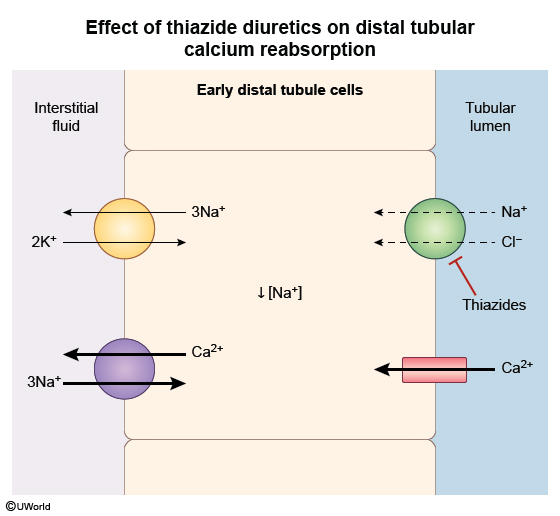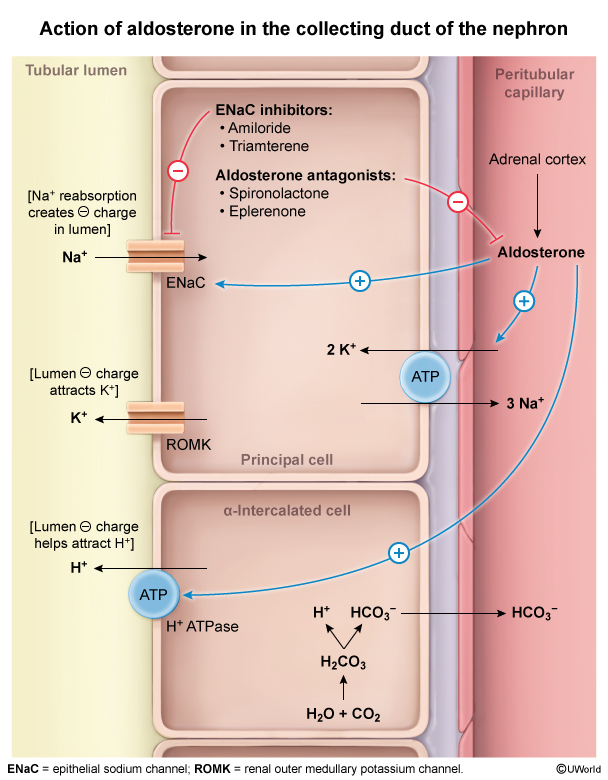Diuretics
Article Sections
Introduction
Diuresis refers to increased urine production, regardless of urine composition. The term natriuresis more specifically describes an increase in urinary sodium excretion. Most diuretic medications induce natriuresis, leading to diuresis because water follows sodium into the urine. An exception is vasopressin receptor antagonists, which promote pure water diuresis without sodium excretion (aquaresis). This article focuses on the different classes of diuretics, their mechanisms of action, adverse effects, and clinical applications.
Classes of diuretics
Diuretics are classified based on their site of action within the nephron and their mechanism of action (Figure 1). The different classes are discussed below and summarized in this table (Table 1).
Loop diureticsLoop diuretics (eg, furosemide, torsemide, bumetanide, ethacrynic acid) are the most potent class. They work by inhibiting the Na
Continue Learning with UWorld
Get the full Diuretics article plus rich visuals, real-world cases, and in-depth insights from medical experts, all available through the UWorld Medical Library.
Figures



